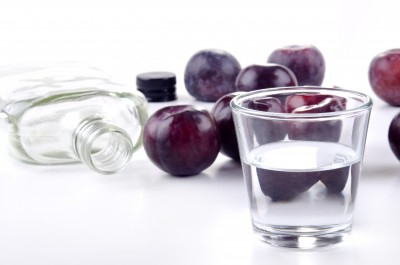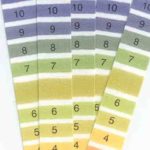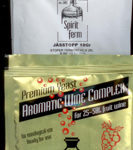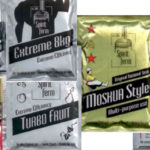Zaszczepianie zacieru – krytyczny moment produkcji alkoholu

Zaszczepianie lub, mówiąc bardziej profesjonalnie, inokulacja zacieru, wydaje się procesem banalnym, ale kryje kilka dość poważnych pułapek – wystarczy jeden błąd, żeby cała partia potencjalnie smacznego alkoholu trafiła do ścieków.
Najprostszy wariant
W najprostszym wariancie będą potrzebne tylko trzy składniki: matka drożdżowa (o tym, w jaki sposób się ją przygotowuje, producent informuje na opakowaniu z drożdżami, od razu warto wspomnieć że gorzelniane drożdże gorzelnicze nie wymagają przygotowywania matki drożdżowej ani nie są uwadniane), woda i cukier.
W domowym wyrobie alkoholi często trzeba najpierw odpowiedzieć sobie na podstawowe pytanie: czy wodę do nastawu trzeba przegotować. I tu pojawia się poważny problem, ponieważ nie ma na to pytanie dobrej odpowiedzi. Z jednej strony należy wodę dobrze przegotować, ponieważ dzięki temu giną bakterie i przetrwalniki wielu z nich, giną także obecne naturalnie w środowisku zarodniki grzybów lub ich żywe komórki, więc cały nastaw będzie bezpieczniejszy. Jednak jest też druga strona medalu: rozpuszczalność tlenu we wodzie maleje wraz ze wzrostem temperatury, więc w stu stopniach praktycznie już go nie ma. Co prawda fermentacja sama w sobie jest procesem beztlenowym, ale równocześnie w kadzi zachodzą setki procesów tlenowych, więc nastaw na wodzie przegotowanej będzie musiał być sztucznie przewietrzany, co bywa technicznie trudne do wykonania. Żeby osiągnąć efekt biobójczy bez gotowania wody, można do nastawu dodać pirosiarczynu potasu.
Problemy wiążą się także z cukrem. Pierwsza, podstawowa rzecz, to miejsce. Każdy kilogram cukru zwiększy objętość nastawu o około 0,6 litra. W zasadzie nie jest to problemem, po prostu trzeba o tym pamiętać.
Sprawa druga związana z cukrem to jego rozpuszczalność. Oczywiście w ilościach użytych do produkcji alkoholu cukier bez problemu się rozpuszcza, ale ostatnio większość cukru w sprzedaży to cukier drugiej klasy, co oznacza, że w opakowaniu znajduje się także spora ilość zanieczyszczeń. Te z kolei mogą negatywnie wpływać na smak alkoholu, ale mogą także stać się pożywką lub siedliskiem bakterii, których w nastawie być nie powinno. Tak samo stanie się z nierozpuszczonymi kryształkami cukru, więc należy zadbać, aby się takie nie pojawiły. W praktyce często nastaw przygotowuje się nie z wody i cukru, ale z wody i syropu, przy czym oczywiście wymaga to paru dodatkowych obliczeń – cały czas należy mieć na względzie pojemność kadzi i końcową moc uzyskanego alkoholu.
Coś na dodatek
Należy dążyć do tego, aby nastaw był jak najprostszy. Jeśli więc chcesz dodać jakieś dalsze substancje, to zazwyczaj możesz rozważyć dodanie ich roztworu do matki albo syropu zastępującego cukier. Chodzi tylko o to, że w ten sposób są mniejsze szanse, że zmarnujesz cały nastaw w przypadku pomyłki – w tym samym celu jako ostatni składnik dodaje się matkę drożdżową – jej przygotowanie wymaga sporo czasu i uwagi, dlatego, zanim się ją doda, należy się kilkakrotnie upewnić, że wszystko jest w porządku. W przeciwnym razie można zmarnować sporo ciężkiej pracy.
Komplikacje matematyczne
Przy projektowaniu nastawu należy pamiętać, że duża ilość cukru przełoży się na zwiększoną ilość alkoholu, ale z drugiej strony, duże stężenia cukru hamują prace drożdży. Jeśli więc chcesz uzyskać mocny trunek, musisz liczyć się z koniecznością dodawania cukru partiami, aby nie przekraczać dodatku 200-300 gramów na litr nastawu. Kiedy dodawać cukier? To właśnie sprawa najtrudniejsza – jeśli drożdże zużyją cały i nie otrzymają kolejnej porcji, obumrą (nawet gorzelniane drożdże turbo). Jeśli druga porcja spowoduje przekroczenie tolerancji drożdży, stracą one siłę fermentacji i cały proces ulegnie desynchronizacji, więc stracisz nad nim kontrolę. Oczywiście wszystkie jest tylko kwestią doświadczenia i próbowania różnych rozwiązań, dlatego nie otrzymasz ode mnie żadnej gotowej receptury.
Znaleziono w Google poprzez frazy:
- destylator z zimnymi palcami ile razy destylować
- destylacja sliwek wegierek
- woda na zacier musi byc przegotowana?








